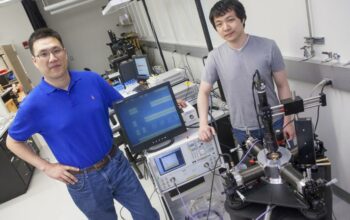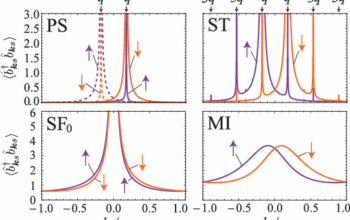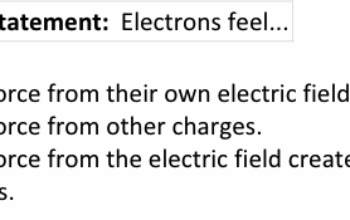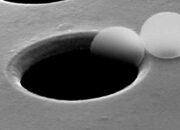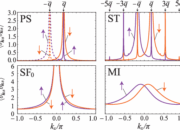In April 2010, the eruption of Eyjafjallajökull, a stratovolcano situated in southern Iceland, captivated the global community not only for its retribution upon air travel but also for the intriguing electrical phenomena observed within its volcanic plume. This remarkable event challenged existing paradigms within volcanology and atmospheric physics, thereby warranting an extensive exploration of the electrified plumes that accompany explosive volcanic eruptions. Through this examination, we gain insight not only into the mechanisms behind volcanic thunderstorms but also into broader implications for our understanding of geophysical processes.
The eruption produced an extensive ash plume that soared to heights exceeding 9 kilometers. This plume, predominantly composed of volcanic ash, gases, and water vapor, was not merely a nuisance for air traffic; it sparked inquiry into the phenomena of electrification. Airborne ash particles, upon collision and agglomeration, facilitate the transfer of charge, effectively creating an environment rife with potential for electrical discharge. This mechanism speaks to the Triboelectric Effect, wherein materials generate electric charge through friction when in motion relative to one another. Herein lies a fusion of natural phenomena—volcanic activity and electrostaticity—which promotes a deeper inquiry into the nature of electricity amidst chaos.
During the eruption, meteorological sensors and satellites detected abnormal electrical activity affiliated with the ash plume, indicate lightning strikes occurring within the plume’s confines. This dual production of volcanic ash and electrical discharge forms a complex interplay, a manifestation observable as volcanic lightning, typically characterized by its distinctive, rapid flashes. Such activity bore resemblance to conventional thunderstorms, yet its origins were rooted in geological processes, thus evoking a nuanced classification: the volcanic thunderstorm.
The electrification of volcanic ash plumes is not an isolated phenomenon; historically, similar instances have been documented in eruptions worldwide. However, the displays of electrical phenomena during the Eyjafjallajökull eruption were sensational due to their visibility and frequency. Researchers noted that the quantity of electrical activity within the ash plume was unprecedented, sparking interest in the charge transfer mechanisms at play. The presence of ice particles, water droplets, and varying mineral compositions within the plume acts as a catalyst, enhancing collisions among particles, thereby promoting charge separation essential for lightning formation.
When discussing volcanic lightning, it is imperative to address the distinct characteristics that differentiate it from traditional bolt lightning. The former is often characterized by a more diffuse, forked structure; furthermore, it tends to occur at lower altitudes in comparison to typical cloud-to-ground lightning, primarily due to the saturated and stratified nature of the volcanic plume. The investigation into the mechanisms of this lightning continues, with studies suggesting that the dynamics of turbulent plumes contribute significantly to the specific pathways that electrical discharges take. The resulting lightning can impact surrounding atmospheric conditions, potentially influencing local weather patterns and contributing to the dispersion of ash.
The implications of these electrified ash plumes extend beyond mere curiosity; they open avenues for advances in forecasting and hazard mitigation. Understanding the behavior of charged particles within volcanic eruptions can improve predictive models concerning ash dispersal and its impact on aviation safety. Enhanced modeling approaches could also benefit from emerging technologies, such as improved remote sensing and real-time monitoring systems, enabling researchers to track fluctuations in electrical activity amid volcanic eruptions with heightened precision.
Furthermore, the phenomenon invites interdisciplinary collaboration among geophysicists, meteorologists, and electrical engineers striving to grasp the complexities of volcanic systems. The confluence of expertise in atmospheric dynamics and geological processes can lead to breakthroughs in predictive capabilities and hazard assessments. This fusion not only expands the academic discourse surrounding volcanic eruptions but also facilitates practical applications that could mitigate the impacts of future volcanic events.
As investigations into Eyjafjallajökull’s electrical activity persist, the eruption serves as a paradigm shift in our perception of volcanoes as more than mere geological entities but as dynamic systems that intricately interact with atmospheric phenomena. The electrified ash plume is emblematic of the unfolding dialogue between earth and sky, elucidating the potential for discovery inherent in the natural world. It is a testament to the complexity of the environment, wherein seemingly disparate elements coalesce to evoke both wonder and scientific inquiry.
The curiosity piqued by such phenomena raises essential questions regarding the broader implications of electrified volcanic plumes on Earth’s environmental systems. As we grapple with the consequences of climate change, understanding these interactions could yield insights into feedback mechanisms that govern atmospheric composition and weather patterns globally. The study of electrified plumes thus becomes a metaphorical conduit into the underlying mysteries of Earth’s systems, beckoning further exploration into the synergy between geological and atmospheric sciences.
In conclusion, Eyjafjallajökull’s eruption not only reshaped landscapes and disrupted flight paths but also illuminated the intricate dance between volcanic activity and electrical phenomena. The electrified plume challenges us to rethink our approaches to volcanic research and encourages a multidisciplinary viewpoint that unites physics, earth sciences, and environmental studies. As scientists delve deeper into the enigmas of volcanic lightning, they simultaneously forge pathways toward innovative methodologies that might one day equip us to better understand and respond to the caprices of nature itself.



